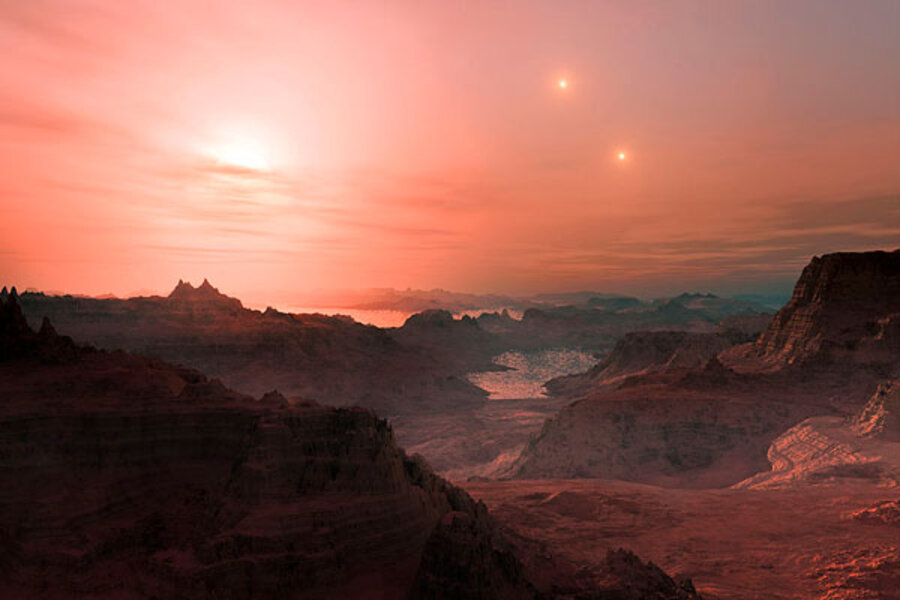How greenhouse gases might make humongous super-Earths habitable
The search for life outside our solar system can, at times, sound a bit like a broken record. We are looking for planets not too much bigger or smaller than ours, circling stars not too different from our sun, orbiting at a distance not too far out or close in.
This, astronomers say, is the "Goldilocks zone," where everything is just right for life. For that reason, finding an Earth-like planet orbiting a sun-like star remains, in many ways, the holy grail of exoplanet research. After all, we know it works here.
Now, a new paper in the journal Science is suggesting that the actual Goldilocks zone might be much different from what we earthlings imagine. Indeed, habitable planets could be much farther out than Earth or significantly closer in if other factors are taken into account, writes Sara Seager of the Massachusetts Institute of Technology in Cambridge, Mass.
The point, she says, is to remember the spectacular variability of nature and consider all the different ways life might find a foothold in the cosmos.
Take greenhouse gases, for example. Here on Earth, as humans introduce more into the atmosphere, these gases are mostly blamed for heating up the climate at unusually fast rates. But, in the right regulation, they serve a vital purpose to life on Earth: They keep the planet warm.
Earth's mass has helped it hold on to these gases, but it's not nearly massive enough to hold on to hydrogen – a much more potent greenhouse gas than the ones at work here. Yet other planets – super-Earths several times more massive – perhaps could hold on to their stocks of hydrogen. If so, they could orbit their stars much farther out than Earth does and still have a warm surface.
In other words, such a super-Earth would receive less heat from its star than we do from ours, but it would hold onto whatever heat it does receive much more effectively.
The same process could also work in reverse, with close-in planets with little atmosphere warmed sufficiently by their star's heat.
Venus, Dr. Seagar suggests, could have been just such a planet – but it had too much moisture. That moisture ended up causing a greenhouse effect so intense that the surface of Venus is now 860 degrees F and the atmosphere is so thick that pressures on the surface are the equivalent of those one kilometer deep in Earth's oceans.
With less moisture – less of an atmosphere and a greenhouse effect – Venus could have been habitable, Seagar says.
"If there is one important lesson from exoplanets, it is that anything is possible within the laws of physics and chemistry," writes Seagar.
Seagar's points are all accepted within the scientific community. But don't expect scientists to go looking for habitable hydro-giants any time soon.
For one, scientists need a particular type of orbiting telescope to study in detail the telltale chemical signatures in distant planets' atmospheres. But because of costs that would run into the billions of dollars, no such telescope has yet been deployed.
Moreover, even with such a telescope, researchers would likely focus on planets in the Goldilocks zone because they believe that search has the highest prospects for success, James Kasting, an exoplanet expert from Pennsylvania State University, told National Geographic.
For her part, Seager just wants people to embrace the idea that life could exist on many different kinds of planets. "I hope it gets people to realize that so many types of worlds could be habitable, and that our chance of finding one is higher when we accept that," she said of her paper, according to The Register.







